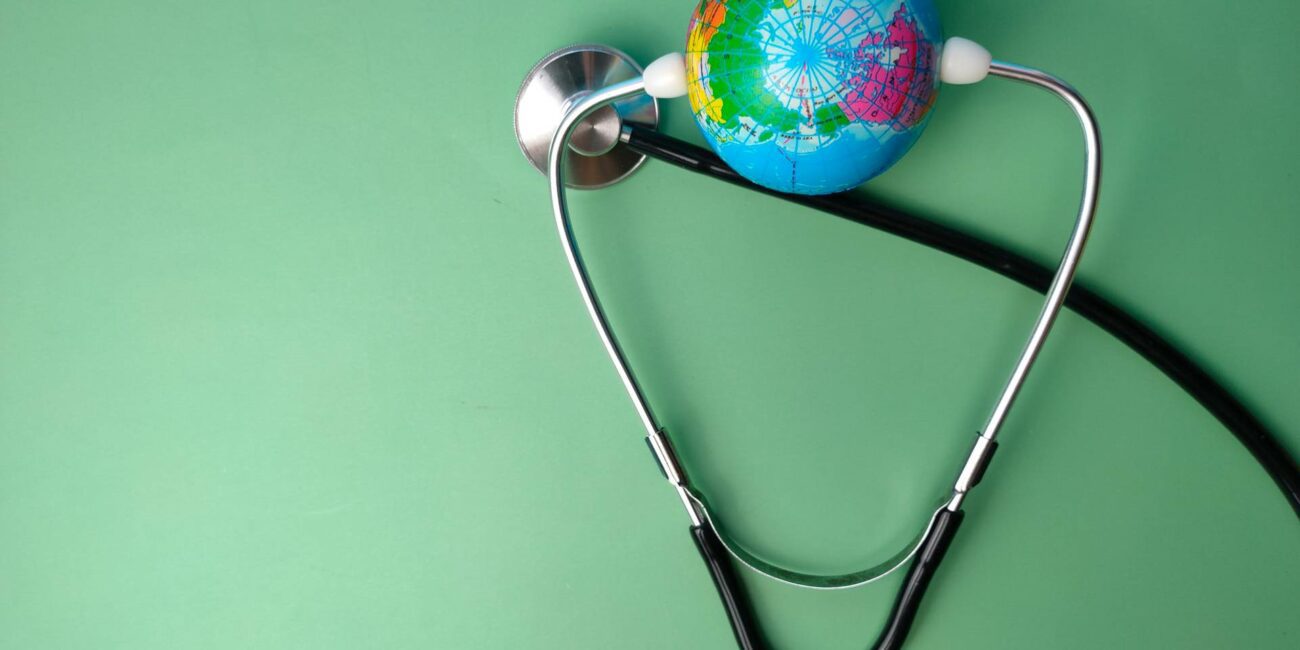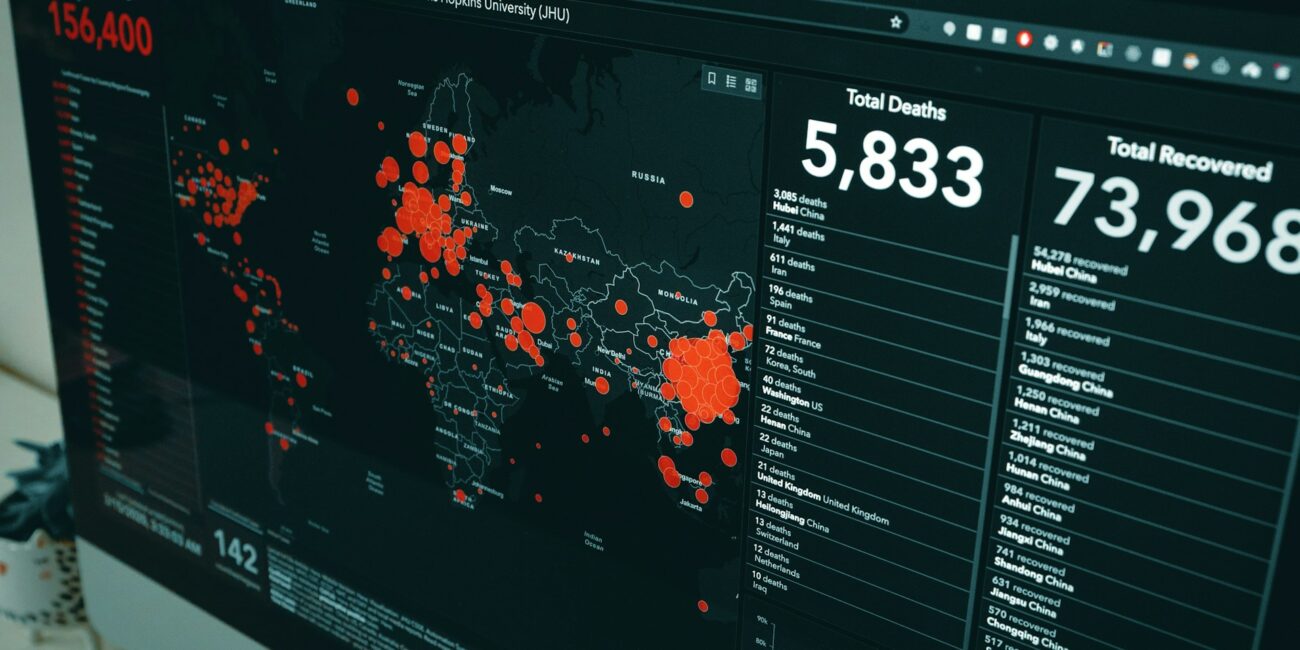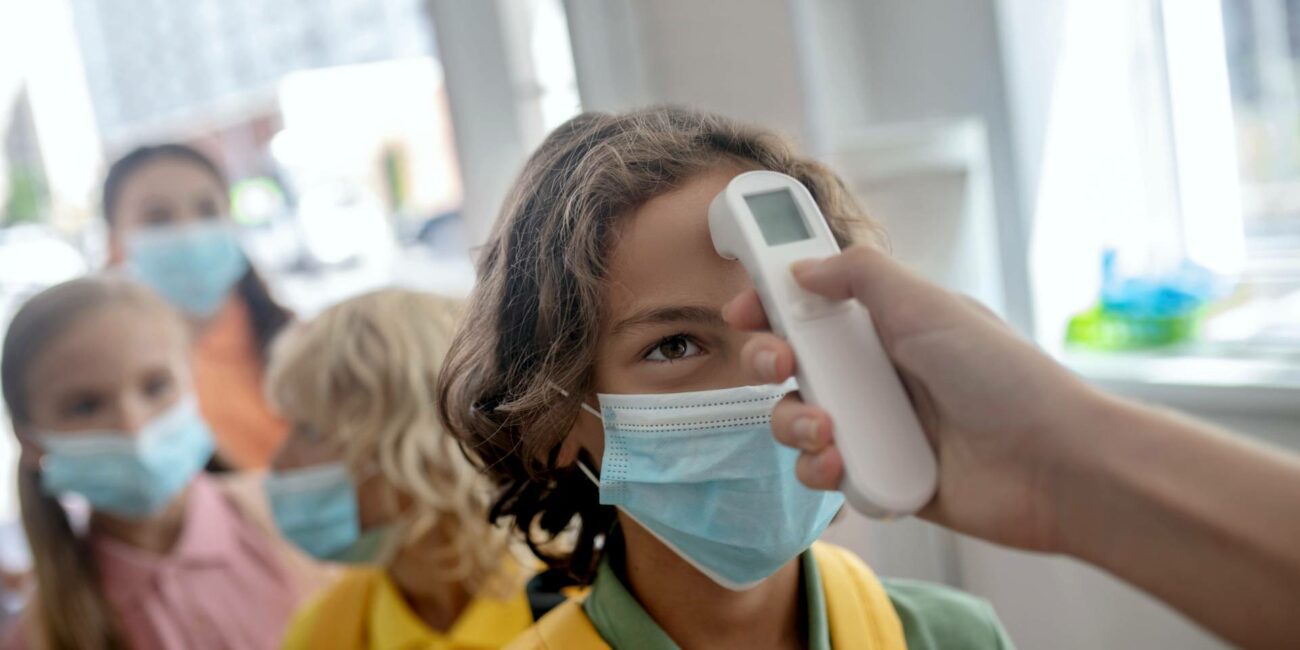Lyndon Wood posed questions that are on many people’s minds. PANDA scientists, doctors, researchers and writers applied their minds.
Disclaimer: The answers in this document are based on the science available at the time of writing. Scientific evidence might change in the future and seeking up to date information might be needed.
GENERAL
Is the COVID-19 pandemic real?
Pragmatic definitions of “pandemic” vary. They commonly include a rapid spread of an infectious disease across many countries simultaneously that causes widespread severe disease or death above the normal level and that is not a seasonal occurrence. In some parts of the world, this applied to COVID-19 in the first half of 2020, although the mortality overall is relatively mild compared to past severe pandemics such as the 1918-19 Spanish flu and several more recent influenza pandemics such as the Hong Kong flu of 1968 and the Beijing Flu of 1993. The UK government even declared that “[a]s of 19 March 2020, COVID-19 is no longer considered to be a high consequence infectious disease (HCID) in the UK”.
Opinions vary on whether COVID-19 still constitutes a pandemic. In many countries, it now has endemic seasonal characteristics of a winter respiratory virus, while in some countries less affected in early 2020, and countries that had hard early lockdowns, it is causing more significant mortality.
Do you believe governments have overreacted to the pandemic?
Indeed, governments have chosen a disproportionate response to the pandemic. More specifically, there has been an unprecedented imposition of restrictions on individual liberties with a single-minded focus on stopping the infections at all costs, without regard for the harms of the policies themselves. That extreme government action has been based on very debatable data and often unsound models.
What do you think about the predictions made by the scientists advising governments?
Predictions based on wrong assumptions are likely to prompt wrong policies. Conflicts of interest affect government experts. Their judgment may be compromised and their opinion should be questioned .
Are lockdowns necessary to contain COVID-19?
Lockdowns may possibly slow the spread if implemented prior to the start of a respiratory season, but under no circumstances can they contain or eradicate a virus. Most studies found no effect of lockdown stringency on the spread of COVID-19 or the resulting mortality. At best, such strategies kick the can down the road. The virus will only stop spreading quickly once herd immunity is reached and few susceptible hosts remain in the population. The low mortality across the South East Asia and Oceania super region is likely driven by other factors, possibly prior immunity.
Do masks work against COVID-19?
We are unaware of any studies using sound methodology that show a benefit for masks in the general population. The only COVID-19-specific mask study using sound methodology found no significant impact of mask wearing on the spread of the disease. This is consistent with such studies for other respiratory viruses. Mask wearing is a personal choice and should never be mandated.
Can you catch COVID-19 by touching surfaces?
Surface contact is not a major source of transmission. Excessive disinfecting and wearing gloves probably won’t make much of a difference. This could, in fact, lead to a false sense of security as it is impossible to disinfect surfaces from all germs. Regular hygiene should be enough.
ABOUT COVID-19
Does COVID-19 exist?
COVID-19 is a disease caused by a virus called SARS-CoV-2. SARS-CoV-2 exists. It belongs to the coronavirus family, of which seven are known to cause disease in humans. It is a very close relative of SARS-CoV-1, which caused the disease SARS in 2003.
Has the virus ever been isolated in humans?
SARS-CoV-2 has been cultured from humans, by swabbing the throat of a sick person and then growing the virus in a specific cell culture.
Is COVID-19 a coronavirus? Is it the same as the flu or the cold?
The SARS-CoV-2 virus belongs to the coronavirus family. The term “flu” is an abbreviation for influenza, a different family of viruses. The term “cold” refers collectively to diseases caused by coronaviruses and other viruses. All of these viruses are respiratory viruses, often sharing symptoms that are hard to distinguish.
How can scientists tell how severe COVID-19 is?
Scientists can infer the severity of a disease by its fatality rate and the population mostly harmed by it – assessing whether it leads to negative outcomes among healthy and young people, or among people who are very ill and immunocompromised.
What is the severity of COVID-19? Is it worse than the flu?
The fatality rate in most people infected with SARS-CoV-2 is very similar to that of the flu. COVID-19 is less severe than the flu for children and young people and more severe than the flu for the elderly with severe underlying illness.
Who are the vulnerable for COVID-19?
The vulnerable group for COVID-19 is somewhat different from most other common respiratory viruses, in that it is more concentrated in older age groups, with an average age of death similar to that of all-cause mortality. Mortality is strongly associated with certain comorbidities, specifically when multiple are present, including obesity, diabetes and cardiovascular diseases.
What does mutate mean?
Viruses are made up of a string of genetic material (DNA or RNA) in a specific sequence. It is usually described as a series of letters like a code. When a virus mutates, a part of its genetic code is altered. Some letters are deleted or substituted. This can change the properties of the virus such as its infectiousness (ability to spread) or its virulence (severity). It is often observed that viruses become more infectious but less virulent over time.
Has the COVID-19 virus mutated?
SARS-CoV-2 has mutated many times already, as all viruses are known to do. A sequence of distinct mutations generally results in a new ‘variant’. Commonly, new variants tend to be less lethal but more transmissible (with some exceptions to this). SARS-CoV-2 seems to follow this same trend.
There is no firm evidence that any new variants of SARS-CoV-2 are more serious than the virus that caused the original outbreak in Wuhan. Some have suggested that the variants seem to be more contagious, although not all scientists agree with this.
Is long COVID a real thing?
All respiratory diseases can lead to long-term health symptoms following the infection episode. COVID-19 is not exceptional in this way.
How is COVID-19 treated or does it even need treatment?
COVID-19 presents mildly in most people. In such cases, it can be treated at home like any other respiratory viral infection. It seems to be the case that patients who are at high risk of developing serious COVID-19 can improve the course of their illness by seeking early treatment before their condition worsens. For more serious cases that require hospitalization, there are several therapeutic treatments available to doctors at this point which are increasing survival rates. Patients should consult with their attending physician to determine the right treatment for them.
Why has the flu almost disappeared while COVID-19 seems to be increasing?
This is a difficult question. Some argue that the flu didn’t disappear and it’s just not being counted now. Routine diagnostic testing for influenza virus is not commonplace practice. It’s very unlikely that all those who tested negative for COVID-19 will be followed up with a flu test. In some cases, influenza may also be misdiagnosed as COVID-19.
On the other hand, it has been observed that winter respiratory mortality patterns are usually associated with a single dominant pathogen at any time, so it could be that (this year at least) COVID-19 has simply supplanted influenza and is, in the main, taking the lives that would have previously been lost to influenza.
ASYMPTOMATIC PRESENTATION
What is asymptomatic?
An asymptomatic person is one who never develops clinical symptoms at all (no sneezing, coughing, fever, loss of taste or smell). This is distinct from a presymptomatic person, who begins to show symptoms after the incubation period of a few days.
Does asymptomatic spread exist for anything?
Yes. AIDS patients could be infected with the HIV virus but not show clinical symptoms for a few years.
Can people be asymptomatic for COVID-19?
People can test positive on a PCR test but show no clinical symptoms of infection. They are neither sick, nor likely to be infectious. People are considered “patients” by doctors when they show symptoms. Additionally, a positive PCR test does not mean a person is contagious or even carries a live virus.
Can an asymptomatic person transmit the virus to others?
There is no clear evidence in the literature showing that asymptomatic transmission is a major driver of the pandemic. The poorly supported theory that suggested this, was the main logic behind lockdown policies, which in any event have been shown to have no beneficial effect on death curves.
IMMUNITY
How does immunity work in the body?
There are three levels of defense. The first line of defense is non-specific and includes immune barriers such as the skin, cilia, the mucosa, saliva and stomach acids. These protective barriers act on all foreign bodies. The second line of defense consists of the phagocytes, which are white blood cells that can engulf any foreign body and destroy it. At this level, the body also launches an inflammatory response such as fever and high blood flow to attack the virus. The third line of defense is the B-cells and T-cells that target a specific foreign body and produce antibodies to kill it.
If you have had COVID-19 does it mean you have natural immunity?
Research has shown that immunity to SARS-CoV-1 exists 17 years later. There is no reason to believe that immune protection from SARS-CoV-2 would not last for years. The persistence of T-cells (white blood cells) has been shown in patients who recovered from COVID-19, which can confer long-term immunity. And of the hundreds of millions of those who have had this infection, it has been extraordinarily rare to be reinfected and get sick; this also implies some lasting immunity.
What does it mean to have natural immunity?
Once you have immunity for a disease, it means you are much less likely to experience severe symptoms towards the same pathogen if you are exposed to it again. Your body will remember this pathogen and react quickly the next time around to disable it.
DIAGNOSING AND TESTING
How can we diagnose COVID-19?
COVID-19 can be diagnosed in patients exhibiting clinical symptoms and confirmed by using a laboratory test. The widespread practice of describing confirmed cases based on tests alone, in the absence of symptoms, is without precedent. It is incorrect to describe such people as “having COVID-19”. This problem is complicated by the use of extremely sensitive tests. When PCR test cycle thresholds (Ct) are set higher than 30 cycles, and the detection of only a single primer is required, many individuals are incorrectly flagged as having the disease. Some of these instances involve people who have long since dealt with an infection, possibly without ever developing the disease, but who have debris from the virus in their systems. Such people are neither infected nor infectious.
Another test used is the rapid antigen test (or lateral flow test). It also uses a nose and throat swab like the PCR test. This test can detect a protein that is highly specific to SARS-CoV-2.
What is the PCR test designed to do?
The PCR test can detect specific segments of genetic material present in the virus. It can indicate the presence of a virus at the time of testing or previously. It does not prove that the person is actively infected, or sick or can infect others. If the cycle threshold (Ct) value is low (e.g. below 25), this indicates that there is a lot of viral genetic material, and therefore it is more likely that the virus is active. If the Ct value is high (e.g. above 30), it is more likely that the infection is no longer active.
Positive results can also occur from contamination when taking the sample or handling it in a laboratory. PCR tests can remain positive for weeks and occasionally months after an infected patient is no longer contagious.
What is a PCR cycle?
When a sample is collected from a person’s nose, it is placed in a machine that duplicates (make new copies of) the genetic material in that sample. Each cycle is one round of copying.
What is the best cycle range to diagnose a virus?
The recommended cycle threshold for the PCR test is between 25 and 30 according to Professor Carl Heneghan from the Center of Evidence Based Medicine at Oxford University. Above this number of cycles, false positives (positive results when the person is neither sick nor infectious) are much more common.
Why do they insert the swab up your nose so far that it almost touches your brain?
The cells most likely to be infected by the virus are at the back of the nasal passages, and so swabbing that area increases the chance of detecting the virus. The swab does not come close to touching the brain though.
Can you test saliva for COVID-19?
SARS-CoV-2 can sometimes be detected in saliva, but this tends to be less sensitive than testing nasal or throat swabs.
Can you test blood for COVID-19?
Blood can be tested for the SARS-CoV-2 antibodies. Antibodies are produced by the white blood cells in response to an invading foreign organism. They recognize and bind to the antigens displayed on the surface of infected cells. The presence of antibodies cannot be used to diagnose COVID-19. Your body takes one to three weeks to launch an immune response after being infected, so testing for antibodies during the first week of infection will yield no results. On the other hand, antibodies can be detected for three months or more after an infection. Finding antibodies does not mean the person is currently infected. It means the person has been exposed to the virus at some point in the past and has developed immunity to it. This test is usually used to assess the level of immunity in the general population. Declining antibodies do not imply that immunity is vanishing, indeed that is common – the immune system has the ability to remember past infections and provide protection via other mechanisms, like T-cells.
Can you diagnose COVID-19 in a corpse?
A dead body can have enough segments of genetic material of the virus to get a positive PCR test. A positive test cannot be considered a diagnosis without symptoms that are highly characteristic of COVID-19.
Is a virus transmissible from a corpse?
The risk of transmission from a corpse is minimal.
Can you diagnose COVID-19 28 days after having it?
A PCR test can give a (false) positive result for up to three months after initial exposure to the virus. COVID-19 should not be diagnosed without the presence of clinical symptoms and a confirmatory alternative test.
If someone tests positive 28 days prior then dies of a heart attack, can they be considered a COVID death?
A COVID-19 death should be defined as the death of a patient who is an active COVID-19 clinical case (a patient exhibiting clinical symptoms of inflammation due to the disease). This is the way infectious disease deaths are normally recorded. However, many countries are recording COVID-19 official deaths if there is past evidence of a positive PCR test, or the patient is considered “probable” or “presumed’ to have COVID-19, even where the cause of death is clearly unrelated and symptoms are not present. This generous diagnosing can inflate the number of deaths in the data. Countries categorize deaths as “COVID deaths” using different criteria, so comparisons of such statistics are of questionable validity.
If the media says 600,000 people were diagnosed using the PCR test, what do you think the real number of infections is likely to be?
This depends on who is being tested, how many PCR cycles (Ct value) are used and how careful the testing laboratory is to prevent contamination. If large numbers of people with no symptoms are tested and high Ct values are used, then many ‘positive cases’ will not be actively infected with the virus nor will they be infectious. The result will be due to past infection, contamination or other test inaccuracies. The number of reported cases is not an accurate measure of the actual number of infected people in a population.
COVID-19 VACCINES
What is PANDA’s position on COVID-19 vaccines?
PANDA supports the use of safe and efficacious vaccines as part of a focused protection strategy. Transparency of all efficacy and safety data for vaccines is crucial for informed consent and bodily autonomy must be respected at all times. Mandatory vaccines have no place in a free society.
Who should get the vaccine?
While anyone can get infected, there is more than a thousand-fold difference in mortality between older and younger people. When vaccines are in short supply, older high-risk individuals should be prioritized to reduce both hospitalizations and mortality. To minimize the risk that older people get infected, it is also important to offer the vaccine to nursing home and hospital staff. As for any medical intervention, individuals should always consult with their physician to weigh potential benefits and harms. A given individual’s risk tolerance and choices about taking a vaccine will vary, person to person.
How do the COVID-19 vaccines work?
Some vaccines contain an attenuated (weakened) virus with an intact antigen. The antigen is a protein that acts as a flag. It sits on the surface of the virus and tells the body that this substance is a foreign body that must be attacked.
The body then recognises the antigen on the surface of the virus and launches an immune response to it. The body starts to produce antibodies to attack this particular protein. Since the virus is dead, the person doesn’t risk getting the disease although they might experience some mild symptoms caused by the body’s immune response. Eventually, the antibodies taper off. In the future, if the person is infected with the same virus, the immune system mounts a rapid response.
mRNA vaccines introduce part of the genetic sequence of the virus into the human body. Once the mRNA is inside the human cells, it uses the cells’ machinery to produce the antigen, which then elicits an immune response. This method risks less contamination in the process of producing the vaccine as animals are not used to produce the antigens and it is easy and fast to scale up to meet high demand. The COVID-19 mRNA vaccines are the first of this type.
What is in the COVID-19 vaccines?
COVID-19 vaccines are made by different manufacturers and have different compositions.
When COVID-19 vaccines have an efficacy of 95%, what does that mean?
With 95% efficacy, 95% of vaccine recipients may be protected by the vaccine. In the COVID-19 vaccine trials, the vaccines were shown to reduce symptoms. The efficacy may be different when it comes to hospitalization, mortality or transmission.
Edited 26 January 2021




